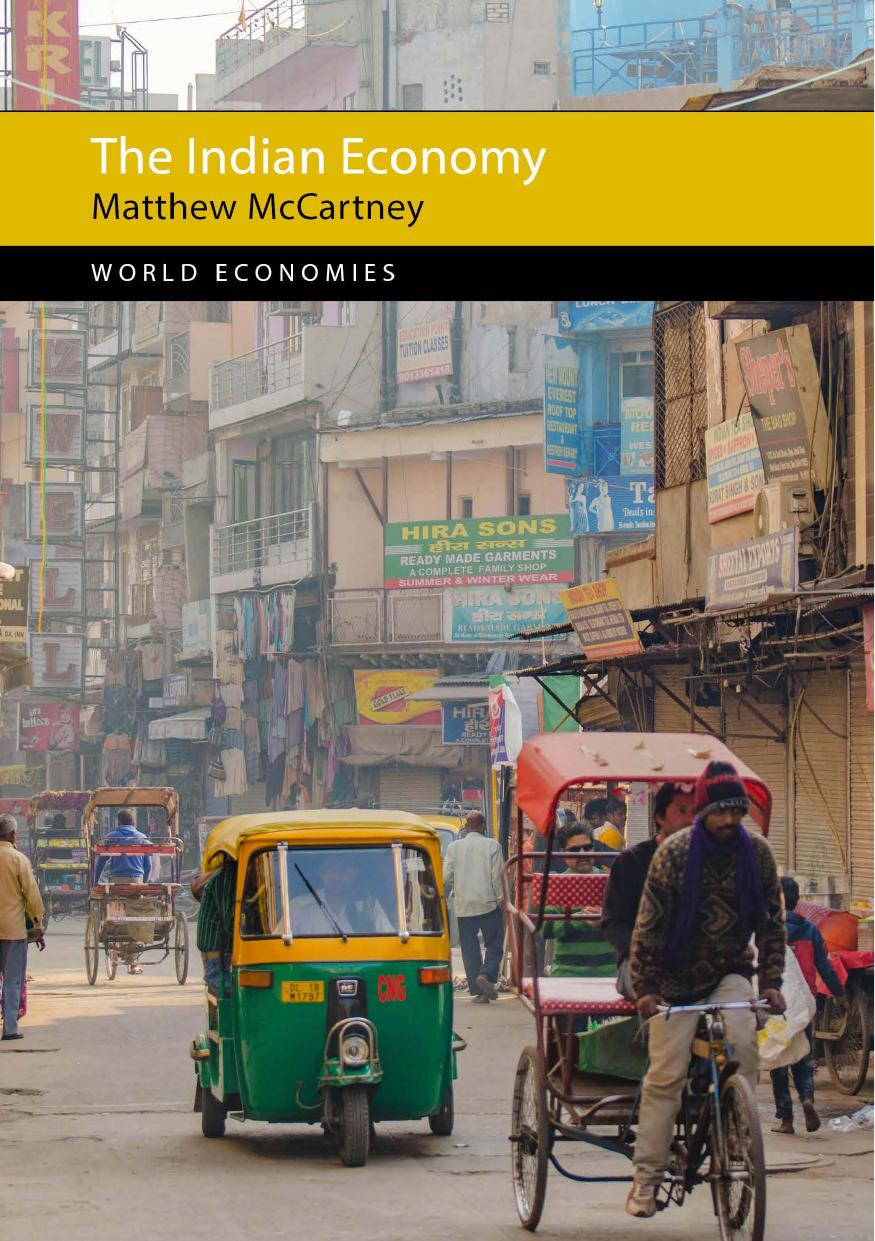The Indian Economy by Matthew McCartney;

Author:Matthew McCartney;
Language: eng
Format: epub, pdf
Publisher: Book Network Int'l Limited trading as NBN International (NBNi)
Published: 2019-06-15T00:00:00+00:00
HEALTH
There are huge variations in the availability of healthcare in contemporary India (Baru et al. 2010). For example, life expectancy in Kerala in 2001â05 was 74 years and in Uttar Pradesh, 62 years; infant mortality 13 and 69 per 1,000 live births; population per government hospital bed 1,299 and 20,041; and proportion of children aged 12â23 months fully immunized 75 per cent and 23 per cent (ibid.: 51). The all-India immunisation coverage of 43.5 per cent in 2005â06 hid considerable variation across socio-economic groups. Immunisation among the top 20 per cent of households by income was 71 per cent, or almost three times that among the lowest 20 per cent of households. Among STs the immunisation rate had increased from 26 per cent in 1998â9 to only 31 per cent in 2005â06 which showed no decline in inter-caste gaps (ibid.).
There are various factors responsible for these high levels of health inequalities. The government has traditionally invested very little in public health, leaving much of it up to the free market. Between 2004 and 2006 for example per capita health expenditure was around $35, of which only $6.50 was accounted for by the government (ibid.). The private sector has gained a dominant presence in medical education and training, medical technology and diagnostics, the manufacture and sale of pharmaceuticals, hospital construction and the provision of medical services (Selvaraj & Karan 2009). Even though public health facilities are supposed to be free (as with education) many people choose to pay private providers. There are widespread perceptions of poor quality, high absentee rates, long waiting times, and lack of courtesy among public-sector providers (Das & Hammer 2007). The public-sector share of total outpatient care declined from 26 per cent in 1987â8 to 20 per cent in 2004 and in hospitalization the decline was from 60 per cent to 40 per cent over the same years.
A consequence of the growing dominance of the private sector has been that the share of household out-of-pocket expenditures (OOPs) is very high and rising. OOP include direct payments for consultations, diagnostic testing, medicines, and transportation. It is estimated that 80 per cent of total health expenditure and 97 per cent of private expenditure (indicating the lack of insurance) are borne through OOPs. This imposes huge financial burdens on households. In 2004â06 the average direct health expenditure on outpatient care per treated person in rural areas was nearly 20 per cent of total annual household consumption expenditure and around 30 per cent for the poorest groups (Baru et al. 2010). These results indicate that a large majority of the economically vulnerable population, and even a sizeable section of the middle class, are susceptible to catastrophic health spending especially if an earning member of the household is afflicted with serious hospitalization. There are widespread reports of corruption in public health services in terms of bribes demanded for admission and treatment in public institutions, in the recruitment, promotion and transfer of personnel, admission to medical/paramedical education, procurement of drugs and technology. In
Download
This site does not store any files on its server. We only index and link to content provided by other sites. Please contact the content providers to delete copyright contents if any and email us, we'll remove relevant links or contents immediately.
International Integration of the Brazilian Economy by Elias C. Grivoyannis(57388)
The Radium Girls by Kate Moore(10915)
Turbulence by E. J. Noyes(7057)
Nudge - Improving Decisions about Health, Wealth, and Happiness by Thaler Sunstein(6642)
The Black Swan by Nassim Nicholas Taleb(6203)
Pioneering Portfolio Management by David F. Swensen(5615)
Rich Dad Poor Dad by Robert T. Kiyosaki(5162)
Zero to One by Peter Thiel(4834)
Man-made Catastrophes and Risk Information Concealment by Dmitry Chernov & Didier Sornette(4748)
Secrecy World by Jake Bernstein(3788)
Millionaire: The Philanderer, Gambler, and Duelist Who Invented Modern Finance by Janet Gleeson(3575)
Skin in the Game by Nassim Nicholas Taleb(3477)
The Age of Surveillance Capitalism by Shoshana Zuboff(3432)
The Money Culture by Michael Lewis(3291)
Skin in the Game: Hidden Asymmetries in Daily Life by Nassim Nicholas Taleb(3271)
Bullshit Jobs by David Graeber(3190)
The Dhandho Investor by Mohnish Pabrai(3175)
The Wisdom of Finance by Mihir Desai(3086)
Blockchain Basics by Daniel Drescher(2895)
